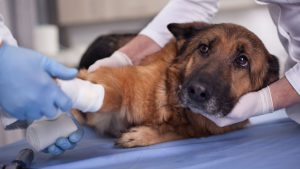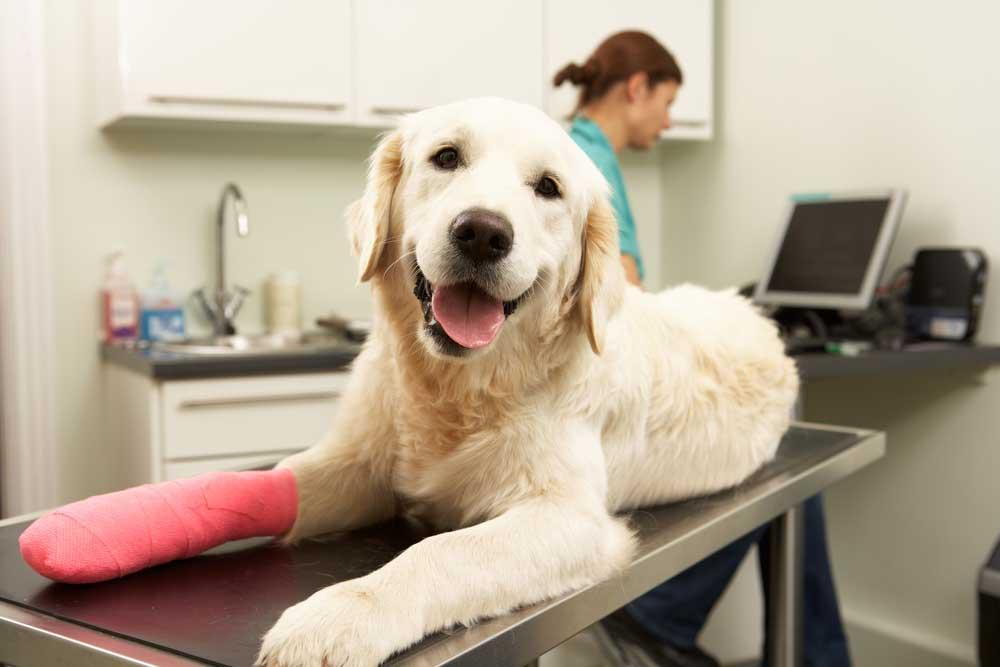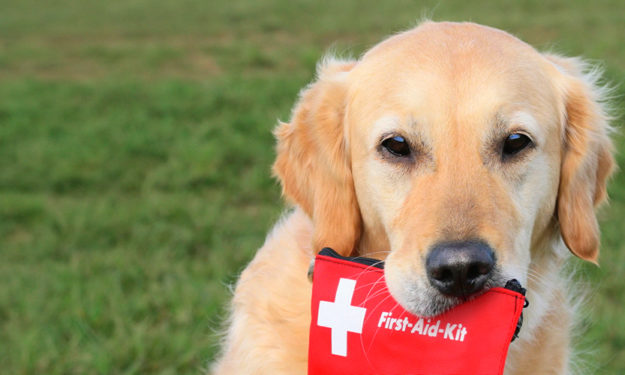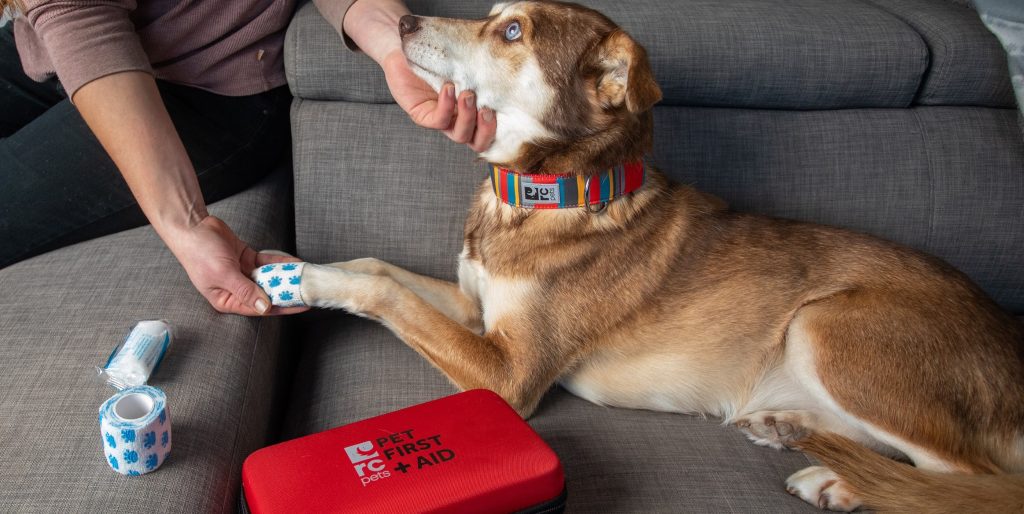
Dogs are curious and like exploring. Even when you keep a close eye on them, injuries can happen. Some seem naturally more accident-prone than others, but every owner knows that accidents happen and it’s important to react on time.
Having first aid skills together with the necessary equipment can sometimes save a dog’s life, ease the pain or make them feel more comfortable until you get help from a professional veterinarian. Read about some of the most common injuries, what you need in your pet first aid kit and the basic skills you should have in case of minor accidents.
Most Common Injuries

Cuts and Lacerations
Since pets walk and run around ‘barefoot’, it’s no wonder to learn that paw injuries happen very frequently. These injuries can range from small scratches and scrapes to deep gashes that might require stitches. Cuts and lacerations can be caused by running into sharp objects, getting caught on something or being bitten by another animal.
Wound care to stop the bleeding, pain medications and in some cases antibiotics may be needed, depending on the location and severity of the laceration.
Sprains and Strains
These injuries can occur in the legs, back or neck and can be painful and debilitating for your pet. They are typically caused by over-exertion and can range from mild to severe. Dogs would usually not use the sprained leg, they limp or carry the leg off the ground completely and they will experience discomfort to palpitation. In these cases, you can ease the pain until you have them examined.
Insect Stings and Snake Bites
Even though animals have a coat that protects them to some degree, they are not immune to insect bites. This is usually not a serious situation but they might have hives and redness, swelling and itchiness in the area where they were stung.
If you like hiking with your dog, remember that their curious noses often get them into unintended trouble. The muzzle is the most common place where dogs are bitten by snakes. You might notice some swelling and small puncture wounds, and less commonly bleeding, depending on the type of snake. If the snake was venomous, the situation is more serious and you need to contact the vet.
Eye Injuries
The most frequent eye injuries are scratches on the eye surface from contact with gravel, sand, or brush and foreign bodies in the eye. These can be painful, so dogs often rub their faces, squint, or blink excessively. A discharge from the eye may occur as well.
Content of the First Aid Kit

Emergency needs may vary; however, having a dog first aid kit can prove to be very helpful in these situations, especially one with the right contents.
• Gauzes and bandages – The gauze pads are the first thing you need to stop the bleeding. They should be sterile and preferably bigger. Gauze rolls and bandages, whether self-adhering or ordinary, serve to support the gauze pad and prevent contamination.
• Blunt tip scissors – Used to trim hair around the wound, or for cutting gauze and bandages.
• A thick towel – This can be applied on large wounds, and serve as a blanket or temporary muzzle.
• Alcohol, Hydrogen Peroxide, or Antiseptic – Disinfecting the wound and the tools you need to use is the first step. The alcohol can be used to sterilise scissors, tweezers or soak gauze pads, and you can wash the wound with hydrogen peroxide. It is also used to induce vomiting when needed. The antiseptic has a similar purpose in cleaning your hands, equipment, and wounds.
• Benadryl, Eye Solution, Styptic powder – To treat hives, swelling, inflammation, allergic reactions and motion sickness, you can use Benadryl (check the recommended dosage). A sterile eye solution is suitable when you need to rinse the pet’s eye if they were in contact with an irritant. The styptic powder can stop mild bleeding, particularly if a nail has been broken or cut too close.
• Thermometer, Penlight – In case of heat stroke or hypothermia, taking the animal’s temperature is critical. The penlight will help you see more clearly into the dog’s ear, mouth or wound.
• Syringes – Apart from using them to flush the eyes, they are handy for giving liquid oral medications to a fidgety pet.
• Tweezers or tick remover – Removing sharp objects such as thorns or a piece of glass lodged into the pet’s skin can be difficult without a tool. Tweezers can also be used to pull out a tick when you don’t have a special tick removal.
Basic First Aid Skills You Need to Know
The dog first aid kit is only helpful if you know how to use it and are prepared to react in emergencies. The first thing you should do is to assess the situation and keep calm. Injured animals can be frightened and in pain and may try to bite. To ensure the safety of yourself and others, put a muzzle or wrap a towel around its nose.
If urgent attention is needed, contact the vet. Even if they are out of the surgery, they can give you advice on what to do.
If a dog is bleeding, use the gauze and bandage to tie the wound. For places, you cannot bandage, press a pad firmly and hold it in place. You need to apply the bandages tight enough to control the bleeding but not too tight to cut blood flow. This is only a temporary solution until you get the dog to the vet. In cases where the cut is superficial washing it with antiseptic is usually enough.
When a dog has been stung by an insect, try to find the sting and pull it out. Disinfect the area and apply ice to soothe the pain and reduce swallowing. If the sting is in the mouth or throat, call the vet as it may swell and cause difficulties breathing.
Things to Remember

Preventing accidents and injuries is always better, but unfortunate things happen and you will have to deal with them. If you are faced with a more serious situation, try to make the dog comfortable and rush it to the vet. You don’t want to cause more harm than good.
Hopefully, you and your dog can avoid major incidents, but even for minor injuries it’s wise to familiarise yourself with basic first aid and the contents of the kit, so you know how to help your much-loved friend.















